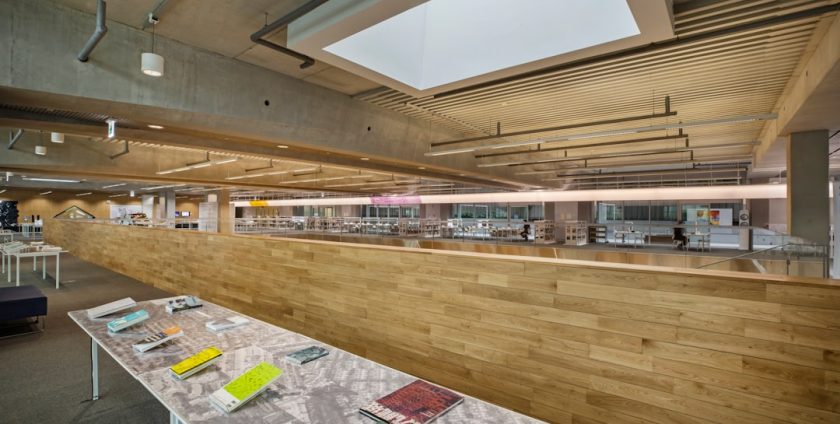
- By: admin
- Category: Commercial Floor Cleaning Machines
- 0 comment
In the bustling environment of commercial and industrial settings, the significance of maintaining clean floors cannot be overstated. A clean floor is not merely an aesthetic choice; it is a fundamental aspect of workplace safety, employee health, and overall operational efficiency. For contract cleaners, building managers, and facility managers, understanding the multifaceted value of clean floors is essential for fostering a productive work environment.
This article delves into the various reasons why prioritising floor cleanliness is crucial, exploring the implications for safety, health, employee morale, and legal compliance. The workplace floor serves as the foundation upon which daily operations unfold. It bears the weight of foot traffic, machinery, and equipment, all of which contribute to its wear and tear.
However, beyond its physical role, a clean floor reflects an organisation’s commitment to professionalism and care for its employees. By investing in proper cleaning and maintenance practices, businesses can create a safer and more inviting atmosphere that ultimately enhances productivity and employee satisfaction. Please feel free to get in touch with us through our Contact Us page.
Summary
- A clean floor in the workplace is crucial for maintaining a safe and healthy environment for employees and visitors.
- Dirty floors pose slip and fall hazards, increasing the risk of accidents and injuries in the workplace.
- Unclean floors can harbour bacteria and germs, leading to potential health risks for employees and visitors.
- A clean floor can positively impact employee productivity and morale, creating a more pleasant and efficient work environment.
- Employers have a legal obligation to ensure that workplace floors are clean and safe, in order to prevent accidents and maintain a healthy working environment.
Slip and Fall Hazards: The Dangers of a Dirty Floor
One of the most immediate dangers associated with unclean floors is the risk of slip and fall accidents. In environments such as warehouses, factories, and office buildings, spills, debris, and accumulated dirt can create treacherous conditions for employees and visitors alike. According to Safe Work Australia, slips, trips, and falls are among the leading causes of workplace injuries, resulting in significant costs for businesses in terms of compensation claims and lost productivity.
Consider a scenario in a busy manufacturing facility where oil has spilled on the floor but has not been promptly cleaned. An employee hurrying to meet a deadline may not notice the slick surface until it’s too late, leading to a serious injury. Such incidents not only affect the individual involved but can also disrupt operations and lower morale among staff who may feel unsafe in their work environment.
Therefore, maintaining clean floors is not just about aesthetics; it is a critical component of workplace safety that can prevent accidents and protect employees.
Bacteria and Germ Build-Up: The Health Risks of an Unclean Floor

Beyond physical hazards, dirty floors pose significant health risks due to the accumulation of bacteria and germs. In high-traffic areas such as hospitals, schools, and offices, floors can become breeding grounds for pathogens that contribute to illness among employees. Studies have shown that surfaces in workplaces can harbour more bacteria than commonly perceived hotspots like kitchen countertops or bathroom sinks.
For instance, in a healthcare setting, unclean floors can lead to cross-contamination and the spread of infections among patients and staff. The presence of harmful microorganisms can result in increased absenteeism due to illness, which ultimately affects productivity and operational efficiency. Regular cleaning protocols that include disinfecting floors are essential in mitigating these health risks.
By prioritising floor cleanliness, organisations can create a healthier work environment that supports employee well-being and reduces the likelihood of illness-related absences.
Productivity and Morale: The Impact of a Clean Floor on Employees
The state of cleanliness in a workplace directly influences employee productivity and morale. A tidy environment fosters a sense of pride among staff members and encourages them to take ownership of their workspace. Conversely, dirty or cluttered floors can lead to feelings of frustration and disengagement.
Employees are more likely to feel motivated and focused when they work in a clean setting. For example, consider an office where employees are greeted by spotless floors each day. This attention to detail not only enhances the overall aesthetic but also signals to employees that their health and comfort are valued.
In contrast, an office with stained carpets or grimy tiles may lead to distractions and decreased motivation. By investing in regular floor cleaning and maintenance, organisations can cultivate a positive workplace culture that boosts morale and enhances overall productivity.
Legal Obligations: The Responsibility of Employers to Maintain a Clean Floor
Employers have a legal obligation to provide a safe working environment for their employees under various health and safety regulations. In Australia, the Work Health and Safety Act mandates that employers must ensure the health and safety of their workers while they are at work. This includes maintaining clean floors to prevent slip hazards and ensuring that surfaces are free from contaminants that could pose health risks.
Failure to comply with these regulations can result in severe consequences for businesses, including fines, legal action, and damage to reputation. For instance, if an employee suffers an injury due to an unclean floor, the employer may face liability claims that could lead to significant financial repercussions. Therefore, it is imperative for facility managers and building operators to implement robust cleaning protocols that align with legal requirements while prioritising employee safety.
Cleaning and Maintenance: Best Practices for Keeping Floors Clean and Safe

To ensure that floors remain clean and safe, organisations should adopt best practices tailored to their specific environments. Regular cleaning schedules should be established based on foot traffic patterns and the nature of the work being conducted. For instance, high-traffic areas may require daily cleaning, while less frequented spaces could be maintained on a weekly basis.
Utilising appropriate cleaning products is also crucial in maintaining floor health. For hard surfaces like tiles or concrete, using industrial-grade cleaners that effectively remove grime without damaging the surface is essential. In contrast, carpets may require specialised cleaning methods such as steam cleaning or encapsulation to eliminate dirt and allergens effectively.
Additionally, implementing preventative measures such as mats at entry points can help reduce dirt accumulation from outside sources.
Employee Training: Educating Staff on the Importance of Floor Cleanliness
An often-overlooked aspect of maintaining clean floors is employee training. Educating staff about the importance of floor cleanliness not only fosters a culture of responsibility but also empowers them to take proactive measures in their daily routines. Training sessions can cover topics such as proper spill management techniques, reporting hazards promptly, and understanding the impact of cleanliness on overall workplace safety.
For example, consider a manufacturing facility where employees are trained to immediately report any spills or hazards they encounter on the floor. This proactive approach not only minimises risks but also encourages teamwork among staff members who feel invested in maintaining a safe work environment. By prioritising education on floor cleanliness, organisations can cultivate a workforce that values safety and takes pride in their surroundings.
The Benefits of Prioritising Workplace Floor Health and Safety
In conclusion, the importance of maintaining clean floors in commercial and industrial settings cannot be overstated. From preventing slip and fall accidents to reducing health risks associated with bacteria build-up, clean floors play a pivotal role in ensuring workplace safety. Furthermore, a clean environment positively impacts employee productivity and morale while fulfilling legal obligations that protect both workers and employers.
By implementing best practices for cleaning and maintenance, alongside comprehensive employee training programmes, organisations can create a culture that prioritises floor health and safety. Ultimately, investing in clean floors is an investment in the well-being of employees and the overall success of the business. FAQs 1.
Why is it important to maintain clean floors in commercial settings?
Maintaining clean floors is crucial for preventing slip hazards, reducing health risks from bacteria build-up, enhancing employee morale, and fulfilling legal obligations regarding workplace safety. 2. What are some best practices for keeping floors clean?
Best practices include establishing regular cleaning schedules based on foot traffic patterns, using appropriate cleaning products for different surfaces, implementing preventative measures like mats at entry points, and conducting regular inspections.
3. How can employee training contribute to floor cleanliness?
Employee training educates staff on the importance of cleanliness, empowers them to take proactive measures in reporting hazards or spills, and fosters a culture of responsibility towards maintaining a safe work environment. 4.
What legal obligations do employers have regarding floor cleanliness?
Employers are required under health and safety regulations to provide a safe working environment for employees, which includes maintaining clean floors to prevent accidents and health risks. 5. How does floor cleanliness impact employee productivity?
A clean work environment fosters pride among employees, reduces distractions caused by clutter or dirtiness, and contributes to overall job satisfaction—leading to enhanced productivity levels.
FAQs
What are the risks of not maintaining a clean floor in the workplace?
Neglecting to keep the workplace floor clean can lead to slips, trips, and falls, which are a common cause of workplace accidents. Additionally, a dirty floor can harbour bacteria and germs, leading to potential health hazards for employees.
How can a dirty floor impact workplace productivity?
A dirty floor can create an unpleasant and unhygienic work environment, which can affect employee morale and productivity. It can also lead to increased absenteeism due to illness caused by exposure to germs and bacteria.
What are the benefits of maintaining a clean floor in the workplace?
A clean floor can contribute to a safer work environment, reduce the risk of accidents, and promote better overall workplace health and safety. It also creates a more professional and welcoming atmosphere for employees and visitors.
What are some best practices for maintaining a clean floor in the workplace?
Regular cleaning and maintenance, including sweeping, mopping, and using appropriate cleaning products, are essential for keeping the workplace floor clean. Implementing a cleaning schedule and providing training on proper cleaning techniques can also help maintain a clean and safe environment.
